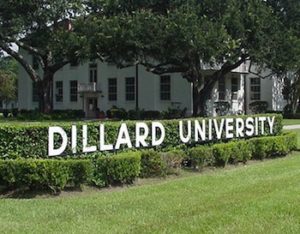
Dillard University was founded on this date in 1869. It is among over 100 Historically Black Colleges and Universities (HBCUs) in America.
The Dillard story begins with the American Missionary Association of the Congregational Church. It founded Straight University, and the Freedman's Aid Society of the Methodist Episcopal Church established Union Normal School. Straight University and Union Normal School were renamed Straight College and New Orleans University. Initially, both institutions offered instruction on the elementary level, soon expanding to include the secondary, collegiate, and professional levels. Gilbert Academy, a secondary school, was a unit of the University of New Orleans. Straight operated a law department from 1874 to 1886.
In 1889, New Orleans University established a Medical Department, which included a pharmacy and nursing schools. The Medical Department was named Flint Medical College, and its affiliated hospital was known as the Sarah Goodridge Hospital and Nurse Training School. The medical college was discontinued in 1911, but the hospital, including the nursing school, continued under the Flint-Goodridge Hospital name.
On June 6, 1930, New Orleans University and Straight College merged to form Dillard University, which chose to follow the practices of the two parent institutions in making no distinction based on race, religion, or sex in the admission of students or the selection of faculty. The trustees of Dillard elected to continue as a part of the University's hospital's work, but not that of Gilbert Academy. The latter continued operation as a separate institution under the sponsorship of the Board of Education of the Methodist Church until 1949. The University operated Flint-Goodridge Hospital, affiliated with Dillard University, from 1932 until 1983.
In September 1935, Dillard University began instruction on a new site with a new physical plant. The University was named in honor of James Hardy Dillard, whose distinguished service in the education of African Americans in the South forms an essential chapter in the history of American education. Notable alums include Ruth Simmons, Joseph Lowery, and Geneva Southall.
Black American Colleges and Universities:
Profiles of Two-Year, Four-Year, & Professional Schools
By Levirn Hill, Pub., Gale Group, 1994
ISBN: 0-02-864984-2